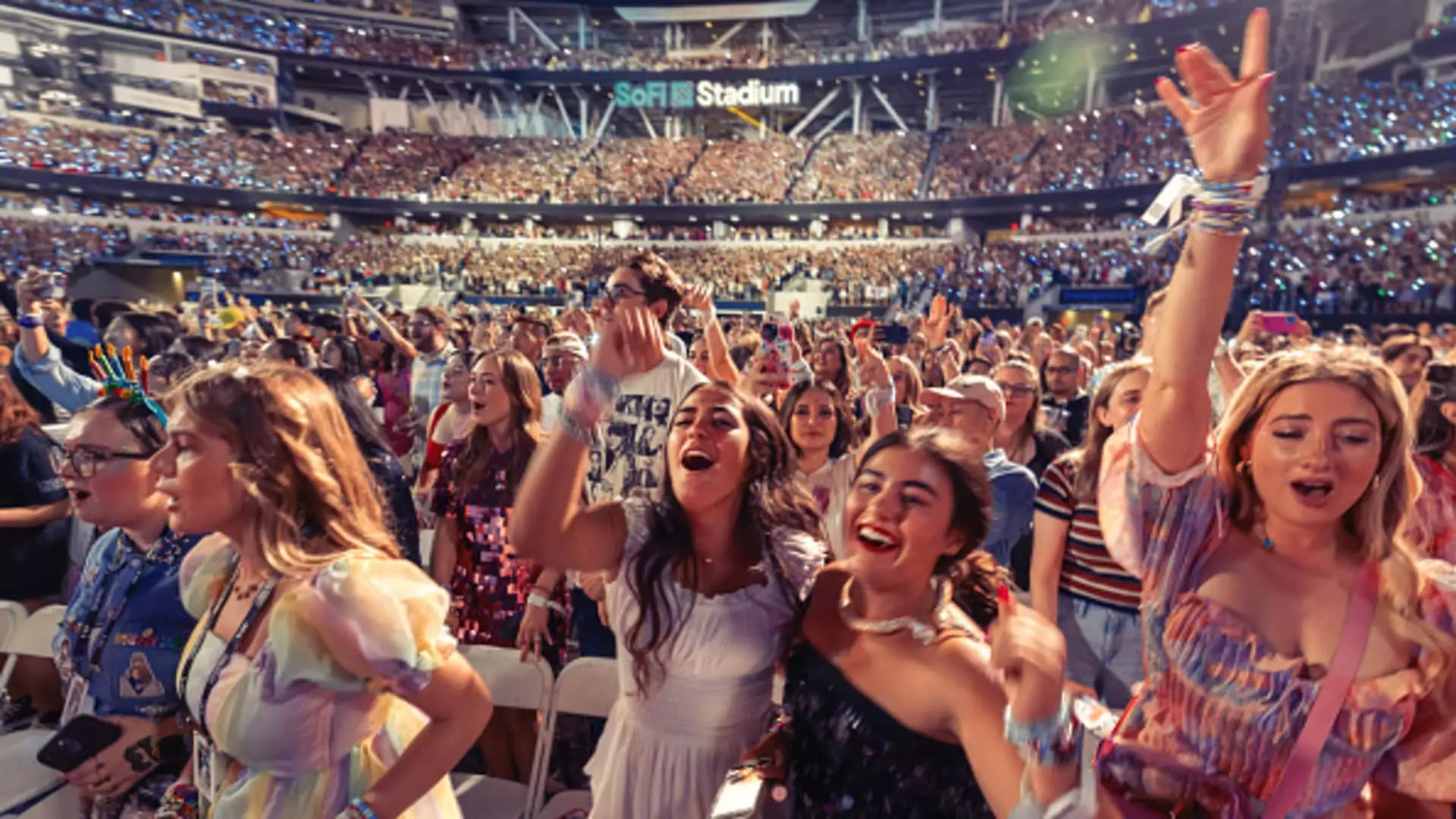As we approach 2025, the music industry shows no signs of slowing down, particularly in terms of live performances. From pop megastars like Billie Eilish and Sabrina Carpenter to hip-hop icons Kendrick Lamar and SZA, concert-goers are gearing up for a dynamic year filled with musical experiences. However, this surge in live events comes with an unexpected twist: the cost of attending has seen a significant rise, leading to the phenomenon dubbed as “funflation.” The increase, driven partially by post-pandemic demand, has changed the way fans engage with live music and how they perceive its value.
According to the Bureau of Labor Statistics, ticket prices for concerts, theaters, and movies have increased by a staggering 20% since 2021. Despite this sharp rise, consumer demand remains robust, indicating a high level of elasticity regarding entertainment expenses. Recent surveys suggest that the average concert-goer attended seven shows in 2024 and expects to attend even more in 2025. The willingness to spend significant sums—nearly 36% of respondents intending to allocate between $100 and $499 for tickets, and 17% planning to spend up to $1,000—highlights a cultural shift towards prioritizing live experiences.
This trend has also spawned a new demographic behavior, characterized by “passion tourism.” The term refers to the lengths fans are willing to go—sometimes traveling across the globe—to attend their favorite artists’ shows. Notably, younger generations, particularly Gen Z and millennials, exhibit a voracious appetite for these experiences, with reports indicating that nearly two out of five in these demographics have spent up to $5,000 on concert tickets for international events. This behavior raises important questions about financial priorities and the lengths people will go to in order to acquire memorable experiences.
At the heart of this rising ticket pricing is the mechanism known as dynamic pricing. Initially employed by the airline industry, this model involves adjusting ticket prices based on demand at particular times. Joe Bennett, a forensic musicologist at Berklee College of Music, argues that while consumers have become accustomed to fluctuating prices in other sectors, the music industry’s shift to dynamic pricing has been much less welcoming. Artists and their management now have greater control over pricing strategies, often leading to controversial practices where dedicated fans might find themselves paying double or even triple the ticket’s face value.
High-profile cases—such as the backlash against Ticketmaster regarding the pricing for Oasis reunion concerts—have underscored the controversy surrounding this practice. Many fans felt exploited when they paid more than expected, leading to widespread criticism. Even Taylor Swift, who typically enjoys a loyal fanbase, faced scrutiny when she opted out of dynamic pricing for her Eras Tour. According to Jay Marciano, CEO of AEG Presents, Swift aimed to uphold a fairer pricing model for her concert-goers, ultimately sparking debates about ethics in ticket sales.
Historically, the music industry has seen a notable shift from revenue sourced primarily from recorded music to that generated through live performances. As Alan Krueger documented, by the mid-2000s, live events had become a critical income stream for artists, eclipsing traditional revenue models based on sales and royalties. Data from Statista revealed that live music revenue surged by 25% in 2023. This trend showcases the evolving landscape in which artists rely heavily on concert revenues to sustain their careers. However, this reliance also raises questions about the affordability of attending live shows for average fans.
The post-pandemic revival of live music led to an unprecedented wave of demand, prompting ticket sellers to capitalize on this enthusiasm. As Bennett pointed out, the industry’s aspiration to maximize revenues often translates into exorbitant ticket pricing. Although dynamic pricing may reflect market realities, it does not ease the burden on consumers, who must grapple with tightening budgets while still seeking unforgettable experiences.
Despite the rising costs, the pandemic has instilled in many a “YOLO” (you only live once) mentality, further complicating consumer behavior regarding discretionary spending. Greg McBride, chief financial analyst at Bankrate.com, highlights that, even when faced with budget constraints, consumers often draw the line at experiences they deem necessary for their well-being, refusing to compromise on moments they value. This mindset pushes ticket sellers to acknowledge the developing culture of prioritizing experiences over material goods, ultimately influencing how pricing structures are developed.
As the trend toward higher ticket prices and dynamic pricing methods continues to reshape the live music landscape, the ramifications for concert-goers are significant. The balance between access and affordability presents a growing dilemma in an industry poised for further growth. As consumers navigate this new reality, the importance of understanding their financial behaviors and projected willingness to spend will be instrumental in shaping the future of live events. The coming year will not only test the limits of consumer tolerance but also redefine the ultimate worth of live musical experiences within the modern economy.

